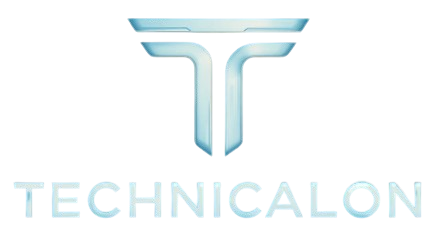The Impact of Ownership Models on Corporate Strategy and Longevity
Understanding the Role of Ownership Models in Corporate Success
Many observers underestimate the influence that a company’s ownership model has on its strategic approach and the risks it faces. Publicly traded companies often overreact to external threats due to market pressures, whereas privately held companies may be overly resistant to change and slow to act when facing industry disruptions.
Navigating these obstacles to long-term survival requires a balanced approach—one that avoids the extremes of panic-driven decision-making or passive inaction. Companies that endure for decades recognize the need for a nuanced strategy that integrates elements of both responsiveness and stability.
Why Some Companies Thrive While Others Fail
The difference between companies that achieve longevity and those that falter after initial success often comes down to how they handle cascading risks. Like accidents, corporate failures typically result from a combination of errors that, when compounded, overwhelm previously effective strategies. However, many of these failures can be traced back to a fundamental but often overlooked factor: the company’s ownership model.
Ownership structures—whether public, private, family-owned, employee-owned, or nonprofit—significantly shape corporate behavior and present distinct challenges in achieving sustainability. Public companies frequently succumb to short-term pressures, making hasty decisions in response to market fluctuations. Private companies, on the other hand, often suffer from a resistance to change, failing to respond swiftly to shifting industry dynamics. The key to corporate longevity lies in understanding and mitigating the inherent vulnerabilities of each ownership model.
To thrive, companies must find a “both/and” approach, striking a balance between agility and consistency across five critical dimensions: corporate scope, business model, leadership succession, investment horizon, and capital structure.
Corporate Scope: Balancing Diversification and Focus
Public companies, fueled by investor expectations for rapid growth, often overextend themselves by diversifying into unrelated sectors, leading to wasted resources and strategic drift. Private companies, with limited access to capital, tend to be overly conservative, concentrating too much within a single industry and becoming vulnerable to sector-specific downturns.
The most resilient companies maintain a strong focus on their core business while integrating strategic diversification. This approach allows them to navigate market shifts and balance performance fluctuations across business cycles. For example, New Balance, originally focused on running shoes, expanded strategically into multiple sports categories. Their commitment to long-term planning rather than short-term revenue goals has been a key differentiator in their sustained growth.
Business Model: Managing Disruption While Maintaining Core Values2
As industries evolve, companies must adapt their business models to stay relevant. Public companies often overreact to external pressures, making drastic shifts that dilute their brand identity. Private companies, conversely, risk clinging to outdated models, assuming market dynamics will not affect them until it’s too late.
The optimal strategy lies in preserving essential company values while remaining flexible in execution. Carvajal, a century-old Colombian firm, exemplifies this principle. While maintaining its stakeholder-focused culture, Carvajal successfully transitioned from traditional printing and paper products to new sectors like IT, packaging, and real estate—demonstrating adaptability without compromising core identity.
Leadership Succession: Finding the Right Balance Between Tradition and Change
Public companies frequently seek external hires during leadership transitions, believing a fresh perspective can revitalize operations. However, external hires often struggle with cultural misalignment, leading to instability. Private firms, in contrast, tend to favor internal candidates to maintain continuity, sometimes at the cost of necessary innovation.
Successful succession planning involves developing internal talent while staying open to external leadership when needed. White Castle, a family-owned fast-food chain, exemplifies this approach. During a leadership transition, the company’s board encouraged collaboration among potential successors to identify the best-fit CEO. This method preserved continuity while ensuring the right capabilities were in place for future growth.
Investment Horizon: Balancing Short-Term Performance with Long-Term Vision
Public companies face constant pressure to deliver immediate financial results, often at the expense of long-term sustainability. A study found that nearly 80% of public firms admitted to prioritizing short-term earnings over strategic growth. Conversely, private companies, without external accountability, may pursue long-term investments without sufficient financial discipline, leading to inefficiency.
The best-performing companies integrate short-term performance metrics with long-term strategic commitments. Research from McKinsey and FCLT highlights that organizations with a genuine long-term mindset consistently outperform their industry peers. Best Buy, for instance, navigated digital disruption by enhancing its in-store experience rather than blindly shifting to e-commerce, balancing immediate market demands with a sustainable growth strategy.
Capital Structure: Weighing Debt Against Financial Conservatism
Corporate failure often stems from an inability to meet financial obligations. Public companies have easier access to debt but can become overleveraged, leading to instability. Private firms, wary of borrowing, may adopt overly conservative financial strategies, missing growth opportunities.
Companies with lasting success adopt a balanced approach to debt, using it strategically rather than as a default growth mechanism. Berkshire Hathaway exemplifies this principle, maintaining strong cash reserves to capitalize on market downturns while selectively deploying debt for transformative investments. This approach provides flexibility and resilience during economic downturns.
Mitigating Ownership Biases for Sustainable Growth
Ownership structures inherently shape decision-making biases that can jeopardize long-term success. Recognizing and addressing these biases is crucial for sustainable corporate growth. While market forces play a role in determining a company’s fate, proactive leaders who understand the risks of their ownership model can steer their organizations toward resilience.
Companies that actively counterbalance their structural vulnerabilities—whether through diversified corporate scope, adaptable business models, well-planned leadership transitions, disciplined investment horizons, or prudent capital management—position themselves for sustained success. By taking a strategic approach to these challenges, organizations can build a pathway to corporate longevity, ensuring continued value creation for employees, customers, and stakeholders.
Frequently Asked Questions
How does ownership concentration affect a company’s decision-making?
High ownership concentration, where a few shareholders hold significant stakes, can lead to more decisive and cohesive decision-making. However, it may also result in decisions that favor majority shareholders at the expense of minority interests.
What are the risks of a single shareholder dominating corporate decisions?
When one shareholder exerts excessive control, it can lead to autocratic decision-making, potentially sidelining diverse perspectives and increasing the risk of oversight or biased choices.
How can dispersed ownership lead to management mistakes?
In companies with widely dispersed ownership, the lack of a dominant shareholder can result in weaker oversight of management, potentially leading to managerial complacency or self-serving decisions.
What role does the board of directors play in mitigating mistakes related to ownership structure?
The board acts as a supervisory body, ensuring that management decisions align with shareholders’ interests. An effective, independent board can provide checks and balances, reducing the likelihood of errors stemming from ownership dynamics.
How does shared ownership among competitors impact corporate strategy?
When major shareholders hold stakes in competing firms, it can dampen competitive behavior, leading to strategic decisions that may not prioritize the company’s best interests.
Can complex ownership structures obscure accountability?
Yes, intricate ownership arrangements, such as cross-holdings or pyramid structures, can make it challenging to identify ultimate decision-makers, potentially leading to accountability issues and decision-making errors.
How does ownership structure influence risk-taking behavior?
Majority shareholders with significant investments might prefer conservative strategies to protect their stakes, while dispersed shareholders might encourage riskier ventures for higher returns, leading to potential conflicts and strategic missteps.
What are the implications of foreign ownership on company decisions?
Foreign owners may introduce different management practices and cultural perspectives. While this can lead to innovation, it might also result in misunderstandings or decisions that don’t align with local market nuances.
How can changes in ownership structure lead to operational disruptions?
Mergers, acquisitions, or significant shifts in shareholder composition can alter company priorities and strategies, potentially causing confusion, resistance among employees, and operational errors during the transition period.
What measures can companies take to balance ownership influence and effective governance?
Implementing robust corporate governance practices, such as establishing independent boards, clear decision-making protocols, and transparent communication channels, can help balance the influence of various owners and minimize the risk of mistakes.
Conclusion
A company’s ownership structure significantly influences its propensity for mistakes. Dispersed ownership often leads to a focus on short-term profits, potentially causing management to prioritize immediate financial gains over long-term stability and innovation. This short-termism can result in strategic errors and a neglect of core values. Conversely, concentrated ownership, such as family-owned businesses, may foster long-term planning and stability. However, it can also lead to entrenchment and weaker internal controls, as controlling shareholders might prioritize personal interests, increasing the risk of missteps.

